Breast implants have helped countless women around the world personalize their breast contours. Many patients consider breast augmentation to resolve self-consciousness about having naturally small breasts, while other individuals undergo the procedure after experiencing changes to their breasts resulting from pregnancy, breastfeeding, and menopause. We understand that every patient has their own unique and personal reasons for pursuing breast surgery, which is why Dr. David Bottger — a highly experienced and board-certified plastic surgeon — customizes every breast augmentation according to each person’s needs, concerns, and aesthetic goals.
Breast Augmentation At a Glance
- Procedure: Outpatient, 1 – 1.5 hours
- Anesthesia: General anesthesia
- Recovery: Approximately one to two weeks
- ACost $9,600 – $10,800
- What is Breast Augmentation?
- Breast Augmentation Benefits
- Breast Augmentation Candidates
- Types of Breast Implants
- Implant Size and Shape
- Implant Placement
- Incision Placement
- Breast Augmentation Procedure
- Fat Transfer Breast Augmentation
- Breast Augmentation Recovery
- Breast Augmentation Results
- Breast Augmentation vs. Breast Lift
- Breast Augmentation Cost
- Virtual Preview of Results
- Breast Augmentation Alternatives
- Choosing a Breast Augmentation Surgeon
- Breast Augmentation FAQs
What is Breast Augmentation?
Breast augmentation is one of the most popular cosmetic surgery procedures in America, with over 298,568 procedures performed in 2022 up 4% from 2019 according to the American Society of Aesthetic Plastic Surgery. As the most frequently performed aesthetic surgery since 2012, breast augmentation can be an incredibly rewarding procedure. Many women who undergo breast augmentation feel more confident in their appearance and more comfortable in their clothes.
Breast augmentation is a surgical procedure that enlarges the breasts through placement of an implant. It can be customized in a number of ways, including:
- Size
- Shape
- Incision placement
- Implant placement
If you feel your breasts are too small, uneven, asymmetrical, or have deflated after pregnancy or weight loss, you may benefit from breast augmentation. Philadelphia plastic surgeon David Bottger, MD has years of experience helping women obtain their ideal breast size and shape, and he would be happy to do the same for you.
What are the Benefits of Breast Augmentation?
Numerous women grapple with the challenges of naturally small breasts or the loss of breast volume due to life-altering events like pregnancy, weight loss, or the inevitable passage of time. Additionally, some women contend with specific breast-related concerns, including unevenness, asymmetry, a lack of cleavage, or insufficient projection. Fortunately, breast augmentation stands as a transformative solution to address these various issues. Others may have concerns with their breasts because they:
- Are uneven
- Are asymmetrical
- Have poor cleavage
- Have a lack of projection
Following a successful breast augmentation procedure, women often experience a remarkable boost in self-assurance, enabling them to embrace a more diverse range of clothing and swimsuits, and navigate social situations with increased comfort and confidence.
Who is a Candidate For Breast Augmentation?
You might want to consider breast enlargement options if:
- You feel your breasts are too small
- Your breasts have lost shape or volume after weight loss, a pregnancy, or with aging
- The upper part of your breast appears “empty”
- Your breasts are asymmetrical
- Either or both breasts have failed to develop properly
- You’ve suffered trauma to your breasts and would like them restored
The ideal candidate for a breast augmentation is someone considering the procedure for herself— not to satisfy anyone else in her life. In addition, a breast augmentation candidate is:
- Over the age of 18
- In good physical and mental health
- Not pregnant or nursing
- Understands the risks and benefits of the procedure
Breast augmentation can boost your confidence and appearance, but it is important to understand its limitations. If you are going into a breast augmentation procedure expecting it to solve your career or relationship problems, or to gain someone else’s affection, you’re doing it for the wrong reasons. Breast augmentation should be pursued for one person: yourself. When done for the right reasons, it can be a life-changing and rewarding experience. With that said, it’s essential to know all of the potential results and benefits, as well as maintain realistic expectations. Dr. Bottger would be happy to answer all of your questions and will make sure you are well-informed about the procedure.
To see what kind of results you can expect from breast augmentation, please view our before-and-after photos.
View Breast Augmentation Photos
Which Type of Implant is Right For You?
The type of implant you choose will have a significant impact on your final results, and is one of the most important decisions to make when undergoing breast augmentation. Dr. Bottger will explain the pros and cons of each type of implant in detail and help you decide which option will best accomplish your goals.
Due to the superior research and advanced technology available today, both saline and silicone breast implants deliver better results than ever before. The controversies associated with silicone breast implants in the early 90s have led to a greater focus on a product that is extremely safe. Dr. Bottger places the safety and well-being of his patients first, and only offers implants with a proven safety record and FDA-approval.
“Gummy bear” implants refer to a type of silicone gel breast implant that differs from a standard silicone implant because it possesses a thicker gel fill. Other terms for this type of implant include “highly cohesive” or “form stable.” The advantage of a thicker gel is the implant can maintain its shape more than traditional less cohesive devices, which lose some superior fullness when a patient is in the upright position. Dr. Bottger only uses smooth walled, non-textured implants. These gummy bear implants offer a good option for patients who prefer more superior fullness or a more rounded upper pole. Though still soft, they may feel slightly firmer than the less cohesive devices.
Saline Implants
In general, saline implants have a silicone shell but are filled with saline solution. They can be filled after placement, allowing for greater customization with regards to size and shape. Characteristics of saline implants include:
- Filled with sterile salt water encased in silicone shell
- FDA-approved for patients 18 and older
- Round and smooth
- Requires a smaller incision when compared to silicone implants
- Less expensive than silicone implants
- Immediately noticeable in the event of implant rupture
Silicone Implants
Silicone implants tend to look and feel more natural compared to other options. They’re much less vulnerable to rippling, but require a slightly longer incision and may be relatively more expensive. These implants are generally:
- Filled with silicone gel encased in silicone shell
- FDA-approved for patients 22 and older
- More natural look and feel than saline implants
- Less likely to wrinkle or ripple when compared to saline implants
- Maintains shape in the event of rupture (may require periodic MRIs to check for rupture)
Gummy Bear (Form-Stable) Implants
Form-stable implants, sometimes called “gummy bear” implants, are comparatively newer than saline and other silicone models and can offer individuals more stable fullness in the upper poles of the breasts. When receiving gummy bear implants, patients can expect:
- Filled with a highly cohesive silicone gel
- FDA-approved for patients 22 and older
- Fuller, more rounded upper pole of the breasts
- Firm, yet natural feel
Choosing the Right Size and Shape For Your Implants
Implants are highly customizable and Dr. Bottger’s goal is to help you find the right type, size, and shape to achieve your ideal results. While he will not choose the implant for you, he will help guide you in deciding what size and shape will best meet your goals.
Keep in mind that for optimal safety and appearance, there may be a maximum recommended implant size for your frame.
Dr. Bottger offers:
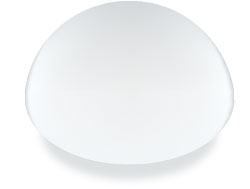
Round Implants
Will pool to the bottom of the implant when in the upright position: This round implant shape resembles that of a flattened sphere. Its main advantage is that it will maintain its shape even if it moves within the implant pocket. It can create a very natural form, as the fill material will pool in the bottom of the implant, creating a teardrop shape. Round implants can be smooth or textured.
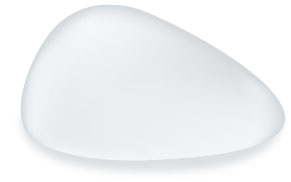
Contoured Implants
Maintain shape and position: These contoured implants are shaped like a teardrop and have also been termed “gummy bear” or form-stable implants. They are smooth-walled, non-textured implants filled with a thicker or more “cohesive” silicone gel. Contoured implants can provide potential advantages with certain breast shapes and should keep their shape more than other implant options. Additionally, these implants require larger incisions for placement.
Dr. Bottger will go into more detail about the benefits and drawbacks of smooth vs. textured implants during your consultation.
Implant Placement
Breast implants can be placed either partially under the pectoralis major muscle (submuscular placement)—known as the chest muscle—or under the breast glands and on top of the muscle (subglandular placement). The most ideal location depends on the size of the implant, as well as your body type and the anatomical characteristics of your breasts. Generally, Dr. Bottger prefers submuscular placement, but in some cases subglandular may be preferable. He will discuss both options in detail during your consultation.
Incision Placement
There are a variety of breast implant incision options, including:
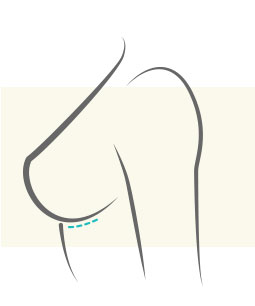
Inframammary
This type of incision is made in the fold under the breast. The incision is one to two inches long, and a pocket is made through it. This incision provides a direct approach, leaving usually an unobtrusive scar on the breast crease. It does not violate the breast tissue and because of this, it is associated with a lower incidence of capsular contracture or breast hardening.
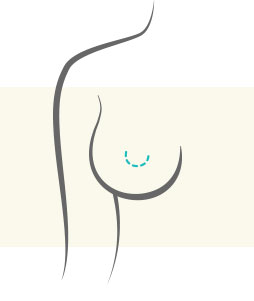
Periareolar
This incision is made at the margin of the pigmented portion of the areola and the skin of the breast. The implant pocket is then created and the implant is inserted through the incision. Periareolar incisions have the benefit of usually high quality scars. However, this approach may not be advisable for women with small areolas or who are getting larger implants. Additionally, a higher incidence of capsular contracture or breast hardening is associated with this approach.
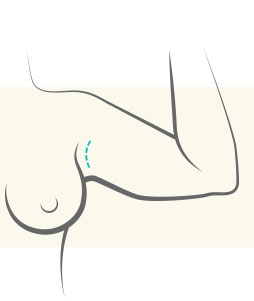
Axillary
An axillary incision is made through a crease in the armpit. The advantage of this approach is that no scars are left on the breast. However, because this is a remote approach, it is associated with a higher degree of fold asymmetries requiring revision surgery. Also, control of bleeding and optimal pocket dissection can be impaired.
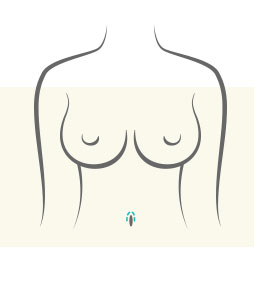
Umbilical
An umbilical incision is made in the belly button. A special instrument is used to tunnel from the incision to the breasts. Dr. Bottger generally does not perform this type of incision, as the lack of visualization creates a greater chance for asymmetrical pockets. In addition, bleeding cannot be controlled as well, which may lead to post-operative problems. It also necessitates use of saline implants only.
How is Breast Augmentation Performed?
Breast augmentation takes place on an outpatient basis and generally lasts less than an hour and a half. It may take longer if the augmentation is combined with another surgery, such as a breast lift. Performed under general anesthesia, the procedure begins with an incision made either around the areola, within the breast crease, or in a natural fold of the armpit. Dr. Bottger prefers the inframammary (breast crease) incision in most cases because of the lesser chance of capsular contracture with this approach, but will discuss the best incision location for your needs and aesthetic goals during a consultation. In any case, the incision will be placed discreetly in the natural contours of the breasts whenever possible. From your incision, Dr. Bottger will create a pocket for implant placement. He will insert your implants either above or below the chest muscle—depending on the location determined in your treatment plan—and refine the shape of the breasts to achieve your desired look. Dr. Bottger will then close your incisions and you will be able to proceed to the recovery area.
Fat Transfer Breast Augmentation
For certain patients, breast augmentation using the fat transfer technique may be the most ideal solution to attain the breast size/shape desired. Sometimes referred to as “natural breast augmentation,” this procedure uses your own fatty tissue to moderately enlarge the breast size or create a fuller shape. During surgery, excess fat cells are harvested from a fat-rich area of the body (usually the abs, flanks, or thighs) and carefully transferred to the breasts to:
- Provide a modest size increase
- Smooth the edges around implants for a softer, fuller look
- Make the breasts contours more symmetrical
Since your own fatty tissue is utilized to complete the breast augmentation, results can be considered permanent. Plus, there is often no risk of an allergic reaction with the fat transfer technique. In many cases, fat transfer can also help refine the outcome of breast implant placement and make the contours more supple and/or symmetrical.
With fat transfer breast augmentation, it’s natural for some of the transferred fat to be absorbed by the body. This means that the fat transfer technique may not be the best treatment option for all patients—particularly those who are seeking a large increase in their breast volume. Dr. Bottger can assess your needs and goals to help you determine whether you can benefit from fat transfer to the breasts.

Breast Augmentation Recovery
Breast augmentation recovery varies from person to person, but generally most of Dr. Bottger’s patients are up and moving within one day. Every patient is unique, and so is the recovery process. People of the same age with similar health statuses can undergo the same procedure and do everything exactly the same after surgery, yet still recover at vastly different speeds. In general, the recovery timeline usually proceeds as follows:
Immediately following your breast surgery in Philadelphia, a dressing and elastic bandage are applied and must be worn for 24 to 48 hours. After this, you will switch to a support bra. Swelling and bruising after breast augmentation is normal, and most of the time, should disappear within a few weeks.
Most people are able to return to work within a week or two after undergoing a procedure. Your recovery timeline will depend on your lifestyle and the specifics of surgery, such as the size of your implants, the type of implants you chose, their placement, and the nature of your job. Strenuous activity and heavy lifting should be avoided for approximately three weeks, although you can perform light exercise—such as walking—immediately after your surgery. It’s normal for your breasts to feel somewhat firm after breast augmentation. This firmness diminishes with time.
Your breasts may seem to sit too high on your chest after surgery. Give it time, and they will descend into a more natural position.

How Long Do Breast Implants Last?
Most implants can last over ten years and implant replacement is not required if there are no complications and the breast implants remain in good condition. The lifespan of breast implants depends largely on the type of implant placed, as well as the implant manufacturer. The reality is that everyone experiences different results and implants will age and wear at different speeds. The likelihood of complications arising, such as capsular contracture (the formation of scar tissue), implant rippling, or implant rupture, varies among silicone and saline implants. It is typically very obvious if saline implants leak or rupture, as they will deflate and the breasts will appear asymmetrical. Silicone implants generally maintain their shape in the event of rupture, often making the problem difficult to recognize. For this reason, the FDA has recommended that patients with silicone implants undergo periodic MRIs to ensure they are still intact. It should also be noted that there is no scientific evidence stating a ruptured implant is associated with any systemic disease.
Ultimately, implants do not need to be replaced as long as there are no issues—however, it’s important to be proactive about the condition of your implants. Always remember to schedule an examination with a board-certified plastic surgeon if you have any concerns.
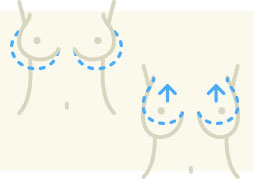
Breast Augmentation vs. Breast Lift
Breast augmentation and breast lift are two separate procedures that accomplish different things. Dr. Bottger performs both of these procedures, often at the same time, but it is important to know the difference between the two.
Breast augmentation, also known as breast enlargement or breast enhancement, is a procedure solely designed to make the breasts larger and more symmetrical. This is accomplished most often through the use of silicone or saline breast implants.
A breast lift or mastopexy, on the other hand, is performed to lift sagging, drooping breasts. If your breasts have started to succumb to gravity and drop down on your chest, a breast lift can restore them to a more youthful position.
Breast augmentation will not significantly lift sagging breasts, and a breast lift will not make small breasts larger. However, when performed together, Dr. Bottger can both lift your breasts and enlarge them. Combining these two procedures is popular among many different patients, particularly older women and post-pregnancy patients whose breasts have lost volume and begun to sag.

How Much Does Breast Augmentation Cost?
The total cost of breast augmentation starts at $9,600 – $10,800, depending on the type of implants selected, the surgical technique used, and the overall complexity of the procedure. While quotes for breast augmentation vary depending on your geographic location, the overall price is generally comprised of fees for the surgeon, anesthesia, surgical facility, the implants themselves, and post-operative care. After assessing your unique needs in a consultation, our Patient Care Coordinator will be able to provide you with an accurate quote of your expenses and walk you through your payment options.
For those interested in paying for treatment over a period of time, we accept plastic surgery financing through CareCredit®. This highly reputable healthcare lending company can make the cost of breast augmentation more affordable by allowing qualified applicants to pay off their treatment in installments, offering an array of low- to no-interest payment plans to choose from. For more information about our accepted payment methods, or to speak to a member of our team, please reach out to our office today.
Reflection of Your Future
Want to see a sneak peek of your potential results before surgery? Our state-of-the-art imaging software can show you a virtual preview of your anticipated results during your consultation! See yourself in real time on a live screen augmented with your new breasts using our Crisalix® virtual aesthetics system.
Are There Alternatives to Breast Augmentation?
Breast augmentation can completely transform your breast contours, but this procedure is not the only treatment capable of rejuvenating the bust. At our Philadelphia practice, Dr. Bottger offers more comprehensive procedures to achieve an even greater degree of enhancement. These options allow patients to address more than just the size of the breasts, creating opportunities for more all-encompassing improvement. Depending on the extent of breast and body enhancement you’re seeking, a Mommy Makeover or a breast augmentation-mastopexy may be more optimal solutions to achieve your goals.
Mommy Makeover
Popular among women who have had children, a Mommy Makeover involves a series of cosmetic surgeries customized to address your individual concerns. Every Mommy Makeover plan is different for each patient depending on the types of procedures you’re interested in, but treatment typically includes some combination breast augmentation, tummy tuck surgery, mastopexy, and liposuction. No matter what procedures are included in a Mommy Makeover, the goal is to improve the breast and body contours and undo the changes caused by pregnancy.
Breast Lift with Implants
Also known as breast augmentation-mastopexy, a “breast lift with implants” involves placing implants at the same time as the breast lift procedure. This corrects sagging while also restoring a fuller, more voluptuous look in the breasts. In general, a breast lift with implants can transform the size, shape, positioning, firmness, and symmetry of aging breasts. For many patients, the procedure is capable of achieving the highest caliber of breast enhancement possible.
Why Choose Dr. Bottger As Your Breast Augmentation Surgeon?
Dr. Bottger takes great pride in helping his breast augmentation patients improve their appearance and self-confidence. He settles for nothing less than providing you with the exceptional quality of care and results that you deserve. In order to ensure you achieve the highest levels of patient satisfaction, he makes the following commitment to you:
- You will receive highly personalized care – Your procedure will be customized to address your unique body type and aesthetic goals. In addition, Dr. Bottger will personally handle every aspect of your care, from your initial consultation through your final follow-up visit, in order to ensure your breast augmentation results exceed your expectations.
- You will receive an unparalleled patient experience – Dr. Bottger has personally vetted every member of his team to ensure they share his same passion for helping his patients. From the moment you walk through our door, you will be cared for by a dynamic team committed to providing you with the finest service possible.
- You will be cared for by a surgeon with the skills and experience to deliver the beautiful results you deserve – Dr. David Bottger is board certified by the American Board of Plastic Surgery and has more than 20 years of experience performing breast augmentation. Throughout his career, he has participated in ongoing training to remain up-to-date on the most advanced breast augmentation techniques. This dedication to his craft has enabled Dr. Bottger to consistently achieve beautiful, natural-looking results that leave his patients extremely satisfied.
- You will never feel pressured into moving forward with a procedure – Dr. Bottger has built a reputation based on honesty and integrity. He will never recommend breast augmentation or any cosmetic surgery procedure unless he truly believes it is the best way to achieve your aesthetic goals. Dr. Bottger will also spend as much time as necessary answering your breast augmentation questions to ensure you feel comfortable with your decision.
Additional Breast Augmentation FAQs
Will I have noticeable breast augmentation scars?
The shape and size of scars after breast augmentation can vary, but most patients find that scarring is virtually imperceptible and/or easily covered with a bra or bikini top. Depending on which incision is used for your procedure, your scars may either appear within the natural crease of the breast fold, around the borders of the areola, or hidden in the underarm. All three of these locations can be very discreet.
Are there any breast augmentation complications I should be aware of?
While there are many women who experience decades of use with their breast implants, there are certain non-life threatening complications that may warrant an implant update or exchange:
- Implant rippling: refers to the edges of the implant being seen or felt through the skin. This is much more common with saline as opposed to silicone gel implants. Also, it occurs more frequently in thinner patients with less breast tissue. Rippling usually does not present a health concern, but many patients opt to exchange their implants for aesthetic reasons if the edges are palpable. Dr. Bottger decreases the risk of rippling by placing implants underneath the chest muscle, allowing for a higher degree of coverage in patients with thin breast skin.
- Implant rupture: a relatively rare complication that involves a tear or break in an implant. Although implant rupture is visually noticeable for patients who have saline implants, there is generally no medical concern since the harmless saline solution can be absorbed into the body without posing a safety risk. In contrast, many types of silicone implants tend to keep their shape in the event of rupture and the only evidence would be the development of breast hardening (capsular contracture) or a change in shape.
- Capsular contracture: the formation and hardening of scar tissue around an implant. Depending on a number of factors, the contraction of scar tissue may cause cosmetic changes, and/or result in symptoms like tightness and breast soreness.
If necessary, all of these complications can be treated with breast revision surgery to alleviate symptoms and restore a normal breast appearance. Dr. Bottger will discuss the risks of breast augmentation in more detail during your consultation.
What is capsular contracture and how can it be prevented?
Capsular contracture is the body’s reaction to the presence of a medical device or foreign object in the body, resulting in the formation of protective scar tissue or a “capsule” around the object. This response is not unique to breast implants, and capsular contracture can occur with any type of prosthesis placed in the body. In many cases, the development of a scar capsule is asymptomatic and can help keep the implant in place; however, hardening or tightening of the capsule can lead to an irregular breast appearance and/or discomfort. Capsular contracture is generally categorized in one of four grades of severity.
Based on research, doctors and scientists believe capsular contracture is less likely when the implant is placed sub-muscularly within a pocket of the chest muscle through either a lower breast crease or inframammary incision. Use of a Keller Funnel® for insertion, combined with antibiotic pocket irrigation at the time of surgery, can also reduce the risk of capsular contracture. Dr. Bottger will go over different measures that may help prevent capsular contracture prior to surgery. Since scar tissue typically develops during the healing process, you can reduce the risk of scar tissue formation by refraining from smoking.
What is BIA-ALCL and should I be worried about it?
BIA-ALCL is a very rare cancer of the immune system that has recently been associated with some types of textured implants. This correlation only applies to certain implants, and the Allergan® corporation has since offered a recall of their BIOCELL® textured implants—the main implants linked to cases of BIA-ALCL.
We understand the concern that this information can cause some individuals, but Dr. Bottger emphasizes that he only places smooth implants at his practice. He stresses that BIA-ALCL only affects 1 in 20,000 women with breast implants and the condition has not involved smooth implants, which comprise 90 percent of implants placed in the country. The FDA does not advise removal of breast implants, and we encourage patients to simply remain aware of symptoms such as pain, lumps, breast asymmetry, and swelling after fully healed. If you do not notice any breast changes, you have no reason to worry. However, it is important to maintain the recommended number of regular breast exams and continue to perform routine self-exams to check for any irregularities. Please don’t hesitate to reach out to our friendly team if you would like more information about BIA-ALCL or if you have any other concerns.
Can I breastfeed with breast implants?
If you were able to breastfeed before surgery, there is a strong likelihood that this will not change after breast augmentation. That said, it’s important to note that not all women are able to breastfeed initially.
What’s the best way to achieve a natural look with breast augmentation?
We understand you want your breast implants to look and feel as natural as possible after your procedure. Your results will be greatly influenced by a series of choices made during the consultation process—the first of which involves choosing the right plastic surgeon. Dr. Bottger is an experienced breast augmentation surgeon with decades of experience performing breast surgery. He knows how to help guide you through the process and then perform the procedure safely and effectively.
Next, you must choose the ideal shape and size for your breast implants. In most cases, silicone implants look and feel more natural than saline implants. Beyond that, the “right” decisions depend on your specific circumstances. For example, it’s important to choose implants that are an appropriate size for your body type and frame. Opting for implants that are too large is one way to create a heavy and unnatural aesthetic. Fortunately, the procedure is infinitely customizable and you’ll be able to work with Dr. Bottger to make the best decisions for you.
Should I wear a bra after breast augmentation?
Once your bandages and dressings are removed, a surgical bra should be worn day and night for approximately two weeks or until Dr. Bottger instructs otherwise. This is necessary to protect your incisions, support your new breast shape, improve blood flow, and manage swelling after your procedure. After the initial healing period, patients are generally able to switch to another supportive, non-underwire bra. A bra with a front-facing clasp is typically recommended to minimize the need to lift your arms during recovery. Dr. Bottger will explain further once he provides you with more detailed post-operative instructions.
Is it possible to get non-surgical breast augmentation?
There is no non-surgical treatment or technique that rivals the results possible with breast augmentation. Breast implants have the unique ability to enhance the volume, shape, size, and symmetry of the breasts simultaneously. Unfortunately, long-term enhancement is not possible without a surgical procedure. While invasive techniques are necessary to achieve a beautiful, lasting outcome, breast augmentation with implants has decades of research to support its efficacy and surgery is considered a straightforward and safe cosmetic procedure when performed by a board-certified plastic surgeon.
Do you massage your implants after breast augmentation?
Massaging your breast implants after surgery is generally recommended to help them settle into position and to potentially prevent capsular contracture (scar tissue formation). This usually involves a light massage performed for a few minutes daily. If Dr. Bottger feels it appropriate, he will advise you on when to start massaging your implants, how often, and the proper techniques to utilize during the process.
How long after breast augmentation can I swim?
Swimming can resume once your incisions are fully healed and you’ve completed the initial stages of your recovery, which typically occurs three to four weeks after surgery. Although most patients are able to swim after approximately one month, it’s important to note that the breast implants may appear higher on the chest wall at this time. It usually takes two to three months for the implants to completely settle and reveal your final results.
When can I exercise after breast augmentation?
Depending on the details of your individual procedure, most patients can resume exercise about three weeks after breast augmentation. However, it’s important to closely follow Dr. Bottger’s post-operative instructions and only return to strenuous activities when you’re cleared to do so. Once you’re able to safely resume exercise, it’s often recommended to start with light activity and observe how your body responds before taking on more demanding workouts.
If you are interested in breast augmentation, Dr. David Bottger serves patients in Philadelphia, Upper Darby, Springfield, and surrounding areas. He can help you achieve the natural-looking results you desire with a treatment plan tailored to your goals. Please contact Dr. Bottger if you have any questions, or if you would like to schedule a consultation.